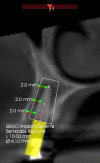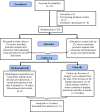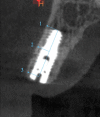Evaluation of implant site preparation with piezosurgery versus conventional drills in terms of operation time, implant stability and bone density (randomized controlled clinical trial- split mouth design)
- PMID: 36463145
- PMCID: PMC9719637
- DOI: 10.1186/s12903-022-02613-4
Evaluation of implant site preparation with piezosurgery versus conventional drills in terms of operation time, implant stability and bone density (randomized controlled clinical trial- split mouth design)
Abstract
Background: The preparation of the implant bed has a major influence on the success rate and long-term survival of dental implants. Piezoelectric devices and special implant drilling inserts are now emerging to replace conventional drills showing improved bone response and healing around implants. The purpose of this study is to compare the piezoelectric inserts versus the traditional drills for implant site preparation.
Methods: Twelve male patients who received a total of twenty-four dental implants have been selected to participate in this split-mouth clinical trial. Each patient received two implants; one installed after piezosurgery assisted osteotomy, while the contralateral side received the implant with the original drilling protocol. The timing of surgery, implant stability, and bone density around the installed dental implants have been evaluated during a follow-up period extended to 4 months.
Results: a significant difference in terms of time of surgery (p < 0.005) and in implant stability at 4 months (p = 0.024) on the study side, while a non-statistical significance in terms of bone density was detected (p = 0.468).
Conclusion: The piezoelectric implant site drilling protocol seemed to be a reliable and repeatable technique. Despite the limited sample size and lengthier operative time, the piezoelectric inserts enhanced bone quality and implant stability. Clinical trial registration Current Controlled Trials (ClinicalTrials.gov) https://clinicaltrials.gov/ct2/show/NCT05512273 ; the date of registration: 23/08/2022. Retrospectively registered.
Keywords: Bone density; Implant osteotomy; Implant stability; Piezosurgery.
© 2022. The Author(s).
Conflict of interest statement
The authors declare that they have no competing interests.
Figures







Similar articles
-
Conventional drills vs piezoelectric surgery preparation for placement of four immediately loaded zygomatic oncology implants in edentulous maxillae: results from 1-year split-mouth randomised controlled trial.Eur J Oral Implantol. 2017;10(2):147-158. Eur J Oral Implantol. 2017. PMID: 28555205 Clinical Trial.
-
Changes in implant stability using different site preparation techniques: twist drills versus piezosurgery. A single-blinded, randomized, controlled clinical trial.Clin Implant Dent Relat Res. 2013 Apr;15(2):188-97. doi: 10.1111/j.1708-8208.2011.00341.x. Epub 2011 Apr 19. Clin Implant Dent Relat Res. 2013. PMID: 21682844 Clinical Trial.
-
Histomorphometric and Immunohistochemical Evaluation of Bone Healing Around Implants Placed Using Piezosurgery vs Conventional Drills: A Split-Mouth Pilot Study.J Oral Implantol. 2025 Apr 1;51(2):121-133. doi: 10.1563/aaid-joi-D-23-00141. J Oral Implantol. 2025. PMID: 39849313 Clinical Trial.
-
The Stability and Survival Rate of Dental Implants After Preparation of the Site by Piezosurgery vs Conventional Drilling: A Systematic Review and Meta-Analysis.Int J Oral Maxillofac Implants. 2020 May/Jun;30(3):e51-e56. doi: 10.11607/jomi.5913. Int J Oral Maxillofac Implants. 2020. PMID: 32406651
-
Piezoelectric surgery versus conventional drilling for implant site preparation: a meta-analysis.J Prosthodont Res. 2018 Oct;62(4):391-396. doi: 10.1016/j.jpor.2018.04.004. Epub 2018 May 26. J Prosthodont Res. 2018. PMID: 29843978 Review.
Cited by
-
Assessment of Knowledge and Awareness of Ultrasonic Bone Surgery Among Periodontology and Oral Surgery Postgraduate Students in Maharashtra.Cureus. 2024 Aug 13;16(8):e66812. doi: 10.7759/cureus.66812. eCollection 2024 Aug. Cureus. 2024. PMID: 39280359 Free PMC article.
-
Primary Stability of Implants Inserted into Polyurethane Blocks: Micro-CT and Analysis In Vitro.Bioengineering (Basel). 2024 Apr 15;11(4):383. doi: 10.3390/bioengineering11040383. Bioengineering (Basel). 2024. PMID: 38671804 Free PMC article.
References
Publication types
MeSH terms
Substances
Associated data
LinkOut - more resources
Full Text Sources
Medical

